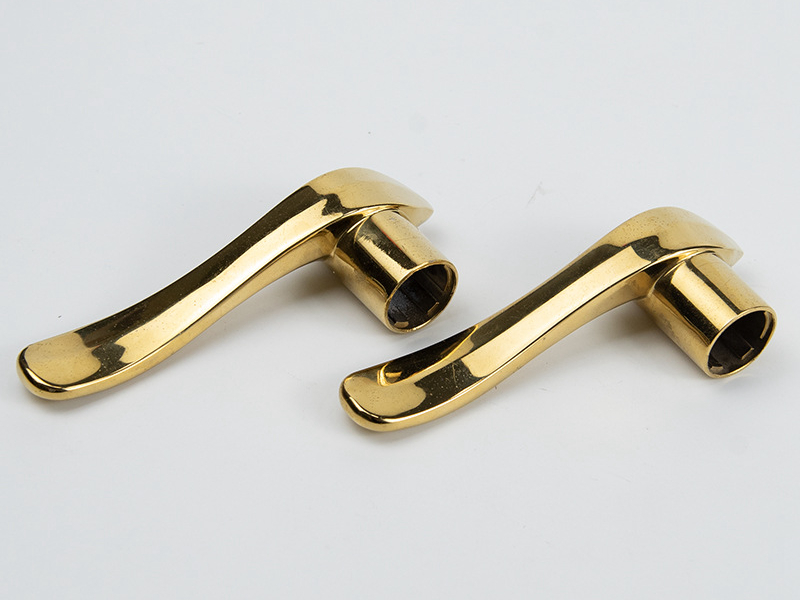Introduction
In today's competitive manufacturing landscape, optimizing output efficiency is essential. Die casting with versatile alloys such as Zamak has proven invaluable for meeting these demanding industrial production standards. Zamak die casting delivers excellent performance, combining cost-effectiveness with precision and durability. This article explores the distinctive properties and benefits of custom Zamak die casting, highlighting how it maximizes production efficiency and lowers operational costs at an industrial scale.
Understanding Zamak Die Casting
Zamak—named from its core elements Zinc, Aluminum, Magnesium, and Copper—is an alloy renowned for its remarkable casting characteristics. Its optimal blend of fluidity, strength, and dimensional stability enables consistent production of complex, detailed parts, outperforming other alloys in high-volume manufacturing.
The die-casting process injects molten Zamak into steel molds under high pressure, rapidly producing precise, high-quality components. Compared to other casting methods, such as gravity casting or sand casting, Zamak die casting offers significantly shorter production cycles and superior consistency, ideal for large-scale manufacturing.
Maximizing Efficiency with Zamak Die Casting
Accelerated Production Cycles and High Throughput
Zamak alloys have lower melting points and excellent fluidity, facilitating rapid mold filling and quicker cooling times. This leads directly to shortened production cycles, allowing manufacturers to significantly increase throughput and productivity, crucial for large-scale industrial operations.
Minimizing Waste and Secondary Processes
The precision of die-casting molds ensures minimal material waste, producing near-net-shape components that require fewer secondary operations. Zamak die casting reduces the need for additional machining or surface finishing, substantially cutting costs and accelerating production timelines.
Consistent Quality and Dimensional Accuracy
Zamak alloys' inherent stability and precise mold-filling properties provide highly consistent, dimensionally accurate components. This ensures reliable performance, significantly enhancing overall product quality and reducing defects common in other casting processes, such as porosity found in sand casting.
Economic Benefits for Industrial Scale
Cost Efficiency Through Process Optimization
High-efficiency Zamak die casting significantly lowers production expenses due to shorter cycle times and minimal material waste. The efficient casting process directly translates into reduced operational and manufacturing costs, enhancing overall profitability.
Reduced Labor and Secondary Processing Costs
Zamak’s precision and surface finish quality minimize additional machining or finishing operations, drastically reducing labor expenses and post-processing costs. Its ease of production offers significant savings compared to more labor-intensive casting methods, such as investment casting.
Enhanced Market Responsiveness and Scalability
Rapid production capabilities allow businesses to quickly scale production volumes and respond efficiently to market demands. Zamak die casting enables companies to adapt quickly, capitalize on emerging opportunities, and sustain a strong competitive advantage in dynamic markets.
Key Industrial Applications of Zamak Die Casting
Automotive Industry Applications
Zamak die casting is widely utilized to manufacture automotive components such as handles, housings, gear shifters, and precision-engineered parts. The alloy’s durability and dimensional precision meet the demanding requirements of the automotive sector, significantly enhancing vehicle safety, performance, and reliability.
Consumer Electronics Manufacturing
Zamak's electrical conductivity and structural integrity make it ideal for consumer electronics components, including connectors, intricate housings, and durable casings. Its superior electrical and thermal properties ensure the reliability and longevity of consumer electronics products.
Industrial Hardware and Fasteners
Manufacturers often use Zamak die casting to produce robust hardware components, including hinges, connectors, and fastening elements. Its strength, durability, and corrosion resistance ensure long-lasting performance even under demanding industrial conditions.
Telecommunications Sector Components
Zamak alloys’ excellent electrical and thermal conductivity properties make them suitable for telecommunications parts, including connectors, casings, and enclosures. These components benefit from the alloy’s superior casting precision and efficient manufacturability, which are essential in the telecommunications sector.
Overcoming Common Zamak Casting Challenges
Porosity and Casting Defects
Porosity can compromise the structural integrity of die-cast parts. Manufacturers can significantly reduce defects and enhance product quality by employing precise casting simulations, controlling mold temperatures, and optimizing casting parameters.
Alloy Composition and Quality Control
Maintaining precise alloy composition is vital for consistent casting quality. Regular alloy analysis, strict material sourcing standards, and thorough quality assurance processes ensure Zamak alloys consistently deliver reliable and repeatable outcomes.
Dimensional Accuracy and Mold Maintenance
Maintaining dimensional accuracy and mold consistency is essential for high-quality casting outcomes. Advanced mold design techniques, accurate tooling, and proactive mold maintenance help manufacturers consistently achieve precise results across high-volume production runs.
Future Trends and Innovations
Automation and Advanced Robotics
Future trends in die casting increasingly incorporate advanced automation and robotics. These innovations enhance efficiency, precision, and repeatability, further improving industrial-scale output capabilities and product quality.
New Zamak Alloy Formulations
Ongoing research into alloy formulations is expected to yield new Zamak variants with superior strength, fluidity, and recyclability. Enhanced alloys will further expand potential applications, improving component performance and production efficiency.
Sustainable Manufacturing Practices
Growing emphasis on sustainability drives innovative die casting practices, including recycling Zamak scrap and reducing energy consumption through efficient casting technologies. These practices align industrial-scale production with modern environmental standards, fostering eco-friendly manufacturing.
Conclusion
Custom Zamak die casting offers unmatched advantages for achieving maximum output and efficiency at industrial scales. Its rapid production, consistent quality, and cost-efficiency position it as an essential manufacturing method for various industries. Companies seeking reliable, scalable, and profitable production solutions should leverage the substantial benefits provided by custom Zamak die casting processes.
FAQs:
What makes Zamak ideal for high-efficiency die casting?
How does Zamak die casting improve production throughput?
Which industries benefit the most from Zamak die casting?
What challenges are commonly faced with Zamak die casting?
How are new technologies enhancing Zamak die casting processes?

评论
发表评论